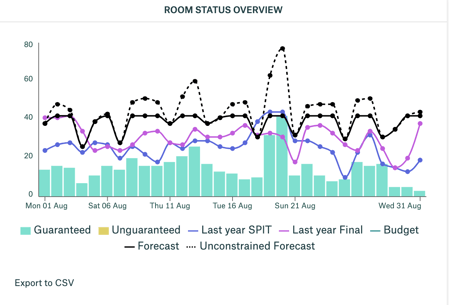We all love BOB, rely on him even… but should we trust him?
NB: This is an article from Right Revenue, one of our Expert Partners
This week, I was sat around a coffee table talking to two hotel Managers about their business. Like many of us, they were a little nervous about the up-coming winter season but both were delighted with their current summer BOB.
Subscribe to our weekly newsletter and stay up to date
But for me, basing most or all of your decisions on BOB can be dangerous. That BOB can be a slippery character! I was asked that if I had to recommend 3 basic starting points for a hotel that was new to Revenue Management, what would they be…
- The first was not to solely base your pricing based on your competitors
- The second was to invest in clever and time-saving technology to allow your extremely valued team members to do their job properly (especially in today’s climate of staff shortages and team members needing to multi-task)
- And thirdly was to make sure that you are not basing your pricing decisions based on BOB
So why shouldn’t we trust BOB? Let’s delve deeper…
First of all, BOB is unstable… BOB often over-promises and under-delivers… As hoteliers, we are still offering flexible cancellation policies and that may be around for some time to come. Our customers are often booking multiple locations or multiple hotels within one location, and then deciding where to stay at the last minute. We also have OTA’s such as Booking openly confirming that up to 50% of all of their bookings cancel. So if you are a hotel with a high OTA dependency (don’t get me started on that!) then all of that lovely BOB can walk straight out your door within 24 hours of arrival. Your business may not be as safe as you think it is and the risk of relying on BOB without tracking your cancellation trends has an immediate impact on your ability to price.
Tracking cancellation trends is not easy and quite frankly to get this right, you will need either time or technology, but cancellations have patterns. As in the example above, your OTA’s may cancel more than your direct business; or your Saturdays may have a higher cancellation than a Wednesday; or your standard rooms may cancel at a higher rate than your suites… But the fact is that if you are relying on BOB, without factoring in your risk of cancellation, then your pricing strategy is not robust.
Secondly, I still (yes, still) see hotels basing their pricing on BOB. Actual BOB! For example:
0-20% occupancy- sell at £80.00 / 21% – 50% occupancy – sell at £100.00 etc etc
What this is ignoring is FORECASTED demand. Why would you base your sales strategy around where you are now, compared to where you will end up?
Let me share a graph from our Right Revenue system which I hope illustrates what I mean…

Above is a graph from a Right Revenue hotel showing their business for August 2022. The green bars are their current rooms sold and if you jump to look at the dashed line, you will see that this highlights their unconstrained demand (unconstrained demand being more demand than a hotel can accommodate). This hotel is pacing way ahead of its usual business patterns and rooms are picking up way ahead of the curve.
So in this example, why would this hotel set their rate strategy based on the 3 rooms they have sold on 31 August, when the unconstrained forecast predicts a demand of 77 rooms? This hotel has a capacity of 58 rooms so what should they be doing with their pricing? Well, certainly not basing it on BOB!
We all need base business. We all love BOB. But BOB and the pricing that he influences should be different by day or week / week of month / month of year and for some – even time of day…
Think about it this way… if you focus on BOB and accept too many rooms, too early and too cheaply, you risk turning away that really lucrative last-minute business (and of course last minute means different things to different hotels and will depend on your own pick-up and lead time trends).
Finally, BOB also influences your ADR. On a separate chat with the wonderful Michael Heyward last week, we chatted about how hotels can often get caught up in how strong their ADR is since the pandemic. Many hotels have based their budgets for 2022 based on the ADR they received during the Staycation boom and believe it or not, many hotels are continuing to budget 2023 in the same way… But business is changing. Corporate travel is back. Tour business is starting to return and is predicted to be close to pre-pandemic levels in 2023. But we must consider the impact that this will have on our ADR. We may be holding or growing occupancy but with a need to accept lower contracted business in the coming months, this will have a direct impact on ADR.
Contracted business is great and we all need it but we need to be realistic about the ‘diamond dust’ – which is the business we can influence and the pricing we can revenue manage… Our business mix will change – BOB will change – his price point will change and we need to be ready for the impact that may have on our ADR.
So, to answer my original question, ‘do we love BOB?’ The answer is a resounding YES! But should we trust him? Most definitely NOT! You can only manage what you can measure, so measure BOB. Watch him like a hawk and don’t let him cloud your thinking, he can be a slippery character 😉





